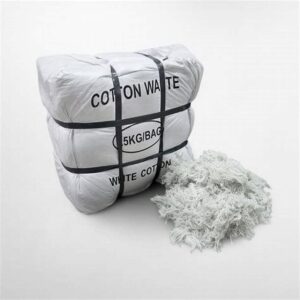Cotton Waste Product Description
Cotton waste refers to the by-products generated during the processing of cotton fibers. This waste can come from various stages of cotton production, including ginning, spinning, weaving, and finishing. The waste can be in the form of short fibers, broken threads, and other remnants that are not suitable for the production of high-quality cotton products. Despite being considered waste, cotton waste has numerous applications across different industries, making it a valuable resource.
Uses of Cotton Waste
Cotton waste has a variety of uses, including but not limited to:
- Textile Industry: Recycled cotton waste can be spun into new yarns or blended with other fibers to create fabrics.
- Insulation Material: Cotton waste can be processed and used as insulation in buildings due to its thermal properties.
- Filling Material: It is often used as stuffing in pillows, cushions, and toys.
- Paper Production: Cotton waste can be pulped and used to produce high-quality paper products.
- Composting: As a natural fiber, cotton waste can be composted and used to enrich soil.
- Biodegradable Products: It can be used to create biodegradable packaging materials and other eco-friendly products.
Technical Data
Here is a table summarizing the technical data related to cotton waste:
| Property | Description |
|---|---|
| Type | Natural Fiber Waste |
| Composition | Primarily cellulose (90-95%) |
| Moisture Content | 8-12% (varies based on processing) |
| Density | 0.5 – 0.8 g/cm³ |
| Color | White to light brown |
| Length of Fibers | 1-2 inches (short fibers) |
| Applications | Textiles, insulation, filling, paper |
| Biodegradability | Fully biodegradable |
| Recyclability | High (can be recycled multiple times) |
| Environmental Impact | Reduces landfill waste, promotes sustainability |
Conclusion
Cotton waste, often overlooked as a by-product, holds significant potential across various industries. Its versatility allows it to be repurposed into valuable products, contributing to sustainability and waste reduction efforts. By understanding its properties and applications, industries can harness cotton waste effectively, promoting a circular economy in textile and other related sectors.

